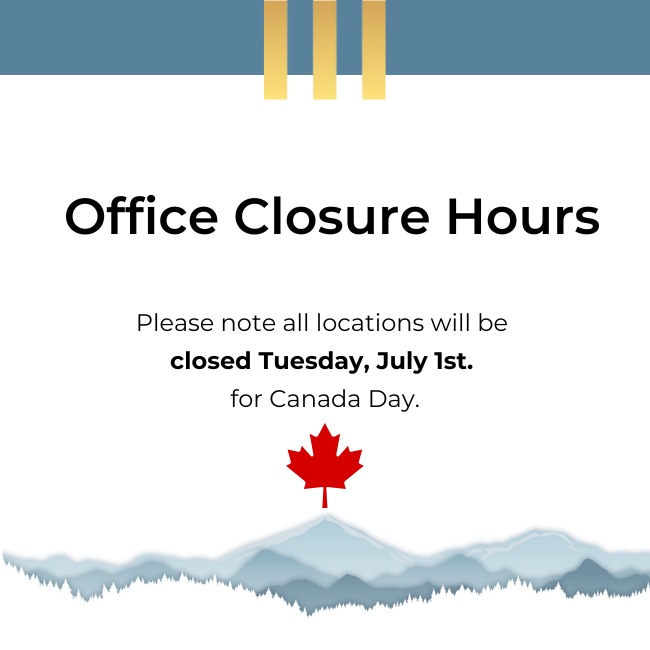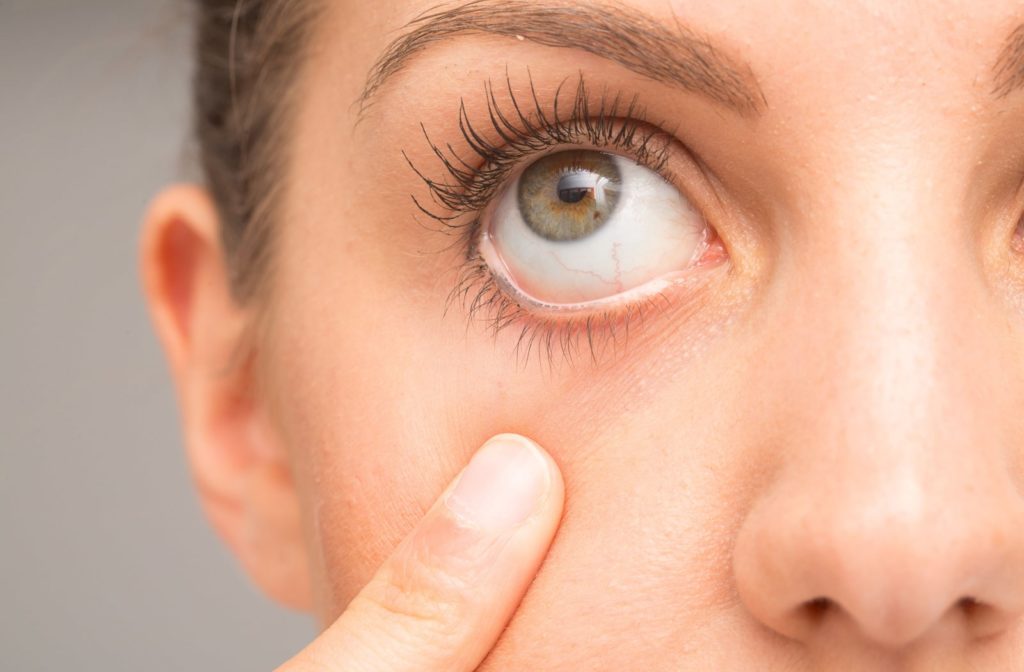Contact lenses have revolutionized how we see the world; they’re comfortable, convenient, and provide great vision. But wearing contact lenses can be a struggle for those who suffer from dry eyes. Symptoms like redness, itching, and irritation can cause discomfort and make it difficult to wear lenses for extended periods.
Daily disposables, silicone hydrogel lenses, gas permeable lenses, hybrid lenses, and scleral lenses are all contact lenses available for dry eyes. Your optometrist can help you find the right fit for your needs.
What Are Dry Eyes?
There are generally 2 types of dry eyes: aqueous deficiency dry eye and evaporative dry eye. Aqueous deficiency dry eye occurs when your eyes do not produce enough tears, while evaporative dry eye happens due to eyelid problems or meibomian gland dysfunction (MGD, causing your tears to evaporate too quickly.
In both cases, the eyes don’t get enough moisture, leading to dryness, discomfort, and a range of other symptoms, including:
- Blurry vision
- Scratchy, gritty, or stinging in the eyes
- Burning sensation
- Red eyes
- Eye fatigue
- Watery eyes without relief
Anyone can experience dry eyes. For some, it can be a temporary annoyance, but others experience chronic dryness that turns daily tasks into frustrating chores. Several factors can increase your likelihood of developing dry eyes or worsen symptoms. These factors include:
- Age
- Sex
- Genetics and family history
- Allergies
- Smoky, dry, or hot environments
- Immune conditions like rheumatoid arthritis, thyroid disease, Parkinson’s disease
- Certain medications, such as antidepressants, steroids, and antihistamines
Studies have shown that contact lenses can absorb moisture from your eyes, leaving them high and dry. That’s why choosing the right kind of contact lens is essential for comfortable vision.
Types of Contacts For Dry Eyes
Your optometrist can recommend a type of contact lens based on your symptoms and lifestyle needs.
Daily Disposables
Daily disposable contact lenses are one of the better options for people with dry eyes. These lenses are designed to be worn for just one day and then thrown away. This means you always have a fresh pair of lenses that are less likely to irritate.
Additionally, these lenses tend to be thinner and softer than hard contact lenses, so many people find them easier to adapt to.
Silicone Hydrogel Lenses
Another great option for those with dry eyes is silicone hydrogel soft contact lenses. These lenses are similar to hydrogel lenses but are made from a breathable silicone hydrogel material that allows more oxygen to reach the eyes.
This increased oxygen flow can help alleviate the symptoms of dry eyes and make contact lens wear more comfortable. Since silicon hydrogel lenses rely on the amount of silicone in them for oxygen permeability rather than water content, they don’t need to take the moisture from your eyes to remain effective.
Gas Permeable Lenses
Gas permeable lenses, also known as rigid gas permeable (RGP) lenses, are made from a rigid, oxygen-permeable material. For people with mild dry eye symptoms, this higher oxygen flow could be what they need to find relief.
Hybrid Lenses
Hybrid contact lenses are a mix of soft and RGP lenses. The center of the lens is rigid gas permeable, while the outer portion is made from a soft material. This design allows hybrid lenses to provide the best of both worlds, with the clear vision of RGP lenses and the comfort of soft lenses. These lenses may be a good option for those who have not found relief from traditional soft or RGP lenses.
Scleral Lenses
Scleral lenses rest on the white of the eye (the sclera) rather than the cornea. These large gas-permeable lenses vault over the cornea, creating a space filled with fluid that provides a cushioning effect for the eyes. This design can be particularly helpful for people with severe dry eyes as it helps to protect and lubricate the eye.
Other Dry Eye Treatments
Contact lenses are not the only solution for dry eyes. There are a range of other treatments that address the underlying conditions causing these frustrating symptoms. Your optometrist can perform simple tests to diagnose dry eyes and offer personalized solutions.
Common treatments for dry eyes include:
- Eye Drops: Lubricating eye drops, also known as artificial tears, can be effective for people with mild to moderate dry eyes. They work by adding hydration to your eyes and helping your tears work more effectively.
- RF: This technique is a non-surgical treatment that uses radio frequencies to target the blocked meibomian glands, melting lipid build-up and facilitating easier expression of the glands. It also encourages the glands to produce more natural oils, which keep tears from evaporating too fast.
- Vitamin Supplementation: Omega-3 fatty acids have been shown to support healthy tear production, lowering the risk of dry eyes. Cold-water fish, such as salmon, are high in omega-3s, but a doctor may also recommend taking nutritional supplements.
- Eyelid Cleaning: Eyelid cleaning helps prevent the build-up of bacteria and mites in the eyelid area, which contributes to blepharitis, a chronic inflammation of the eyelids that can clog the oil glands essential to tear production. Professional eye care cleaning can unclog the oil glands and restore healthy tears.
Seeing Past Dry Eyes
If you suffer from dry eyes, talk with our expert team at The Eye Care Centre about your options for contact lenses. With a variety of lenses available, we can help you find the one that can provide you with the comfort and relief you need.Don’t let dry eyes keep you from enjoying the convenience of contact lenses. Book your appointment today!




